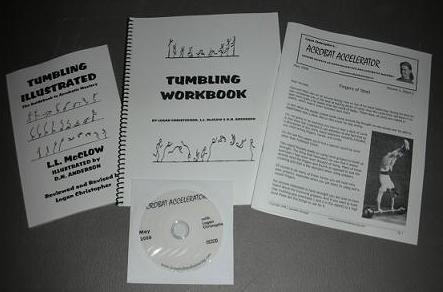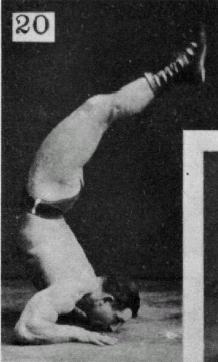Going to answer a few more questions today.
“I can do a handstand for about 15 seconds now and I can also walk on my hands a bit thanks to this website but when I try to press into a handstand my arms die on me. is they any good exercises that will help me build up to a handstand press. btw this site rules lol”
Mellon
First off your welcome for the help. It really doesn’t take much strength to balance on the hands, but pressing up into a handstand is another matter. And of course, the amount of strength you need depends on the type of press you’re doing.
There are several ways to build up your strength. Really any manner of pressing. Any exercise that strengthens your arms and shoulders can be beneficial.
It’s a good idea to make sure you are strong enough before really working on the skills of doing handstand presses. If your max is somewhere around your weight you aren’t going to get much practice as you’ll be too fatigued.
“Well, I’ve been following your videos for a little while, particularly the handstand videos. The video to learn to do a handstand was what got me started and I’ve been doing them since. “Unfortunately, I don’t understand why, but I get a lot of disrespect when I do them in public places (I.E. School (High School Senior)), but I’m still sticking to them proudly. Handstands for life, thanks for ultimately opening me up to the art of them!”
Greggory
Yeah, kids can be cruel. But don’t worry about what others think. After all is said and done, they’ll likely be jealous of the skills you’ve gained from your practice.
“How can you do a handstand if your scared.”
Quade
Get over the fear. How do you get over the fear? it’s a matter of working at it step-by-step doing easier skills until you feel comfortable with the handstand.
That’s why I created the Secrets of the Handstand Quickstart Guide. To give you the lead-up stunts that will build your abilities so that you can handle the handstand.
I didn’t think of it before but these same skills are going to get you comfortable being upside down and ease your way up to the handstand.
Often times its just a matter of doing it. I was at the beach the other day and decided to do some backflips which I hadn’t done in over a month. That period of time had made me a little rusty and brought back a bit of fear in me.
What did I do? I warmed up with a few back handsprings and other drills then moved on to the back flips. No problem after that.
And if you want to find out more about these and other tumbling drills get your copy of Tumbling Illustrated.
Good Luck and Good Hand Balancing,
Logan Christopher









